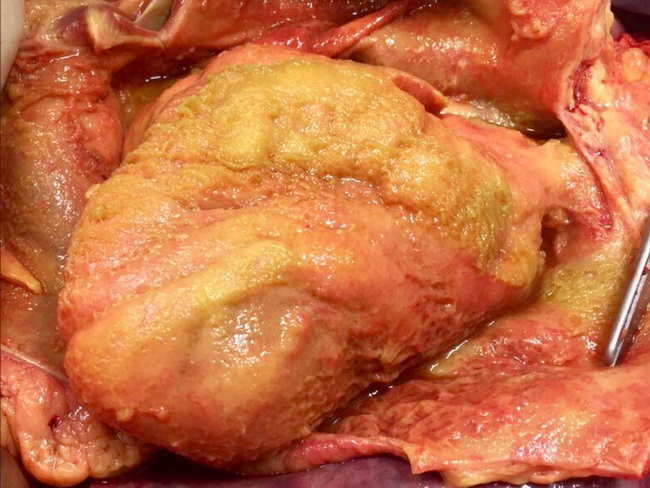Acute Pericarditis


Comments:
CAUSES: Fibrinous pericarditis is one of the most common forms of acute pericarditis. It can be caused by acute myocardial infarction, post-infarction syndrome, uremia, chest radiation, rheumatic fever, SLE, and trauma (including cardiac surgery). CLINICAL PRESENTATION: The patients present with acute chest pain which is usually position dependent. Fever and congestive heart failure are also present. A pericardial friction rub is heard initially but may disappear if there is sufficient accumulation of serous fluid separating the visceral and parietal layers of the pericardium. MORPHOLOGY: The pericardial surface is dry with a coarse granular appearance caused by fibrinous exudate as seen in this image. Over time, the fibrinous exudate may become organized or undergo lysis with resolution of the inflammation. Image courtesy of: Gonzalo De Toro, MD, Puerto Varas, Chile.


